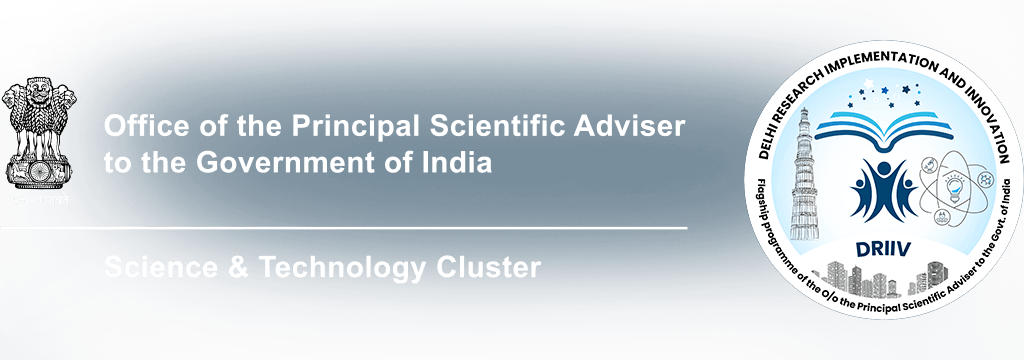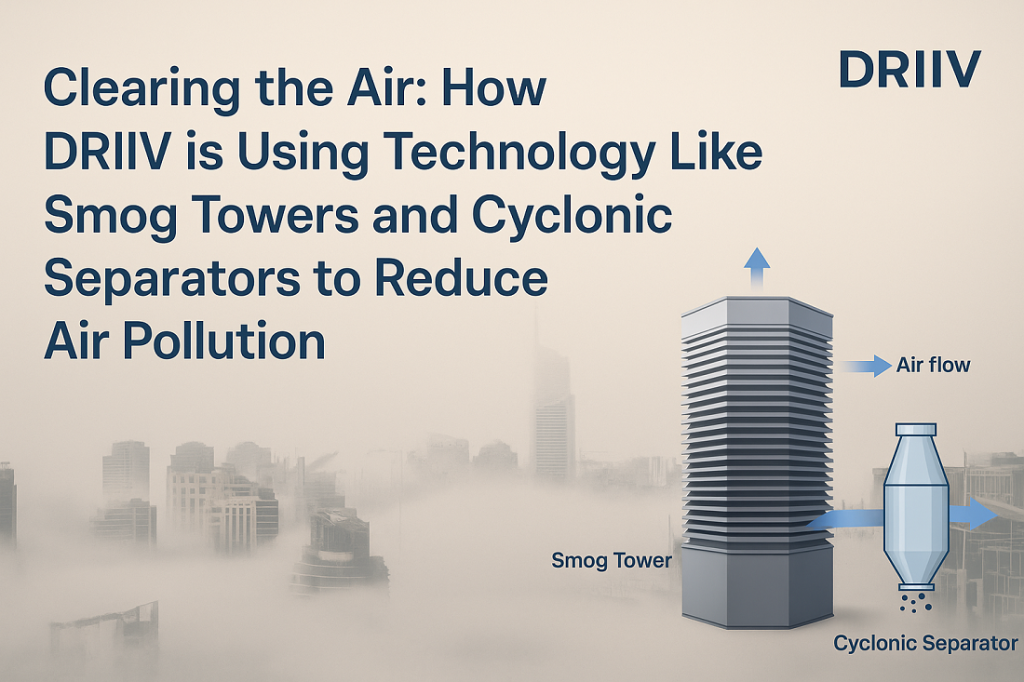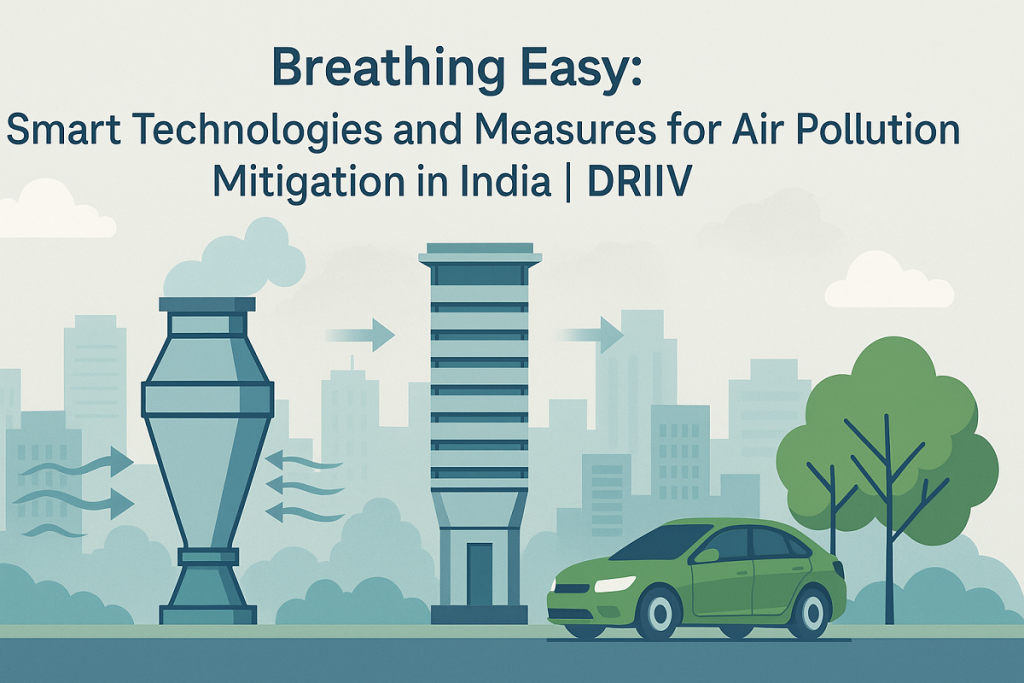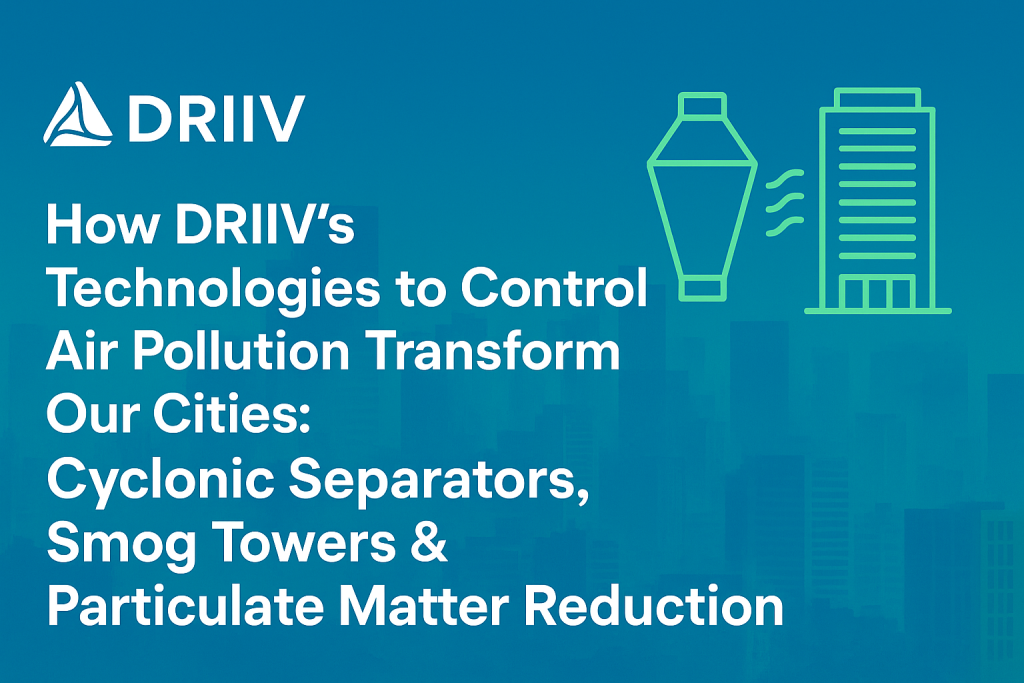Introduction
Air pollution is a big problem in many Indian cities, especially during winters. The thick fog mixed with harmful smoke is called smog. Breathing in this dirty air can cause serious health problems like asthma, lung infections, and heart issues.
But there is hope. New technologies to control air pollution are helping clean the air we breathe. At DRIIV, we are working to reduce harmful pollutants by using advanced tools like Smog Towers, Cyclonic Separators, and other smart systems.
Let’s explore how these solutions work and how Particulate Matter Reduction is becoming a reality.
What is Air Pollution and Why is it Dangerous?
Air pollution means dirty air filled with dust, chemicals, and gases. The most dangerous part of this pollution is called Particulate Matter (PM) – very tiny particles that can enter our lungs and blood. PM2.5 and PM10 are the two most harmful types.
These particles come from:
- Vehicle smoke
- Factories
- Construction dust
- Burning garbage and crop waste
This pollution doesn’t just harm people—it damages the environment, ruins crops, and even affects rainfall.
DRIIV’s Mission: Clean Air for a Healthy Tomorrow
At DRIIV (Delhi Research Implementation and Innovation), we believe in science and innovation. We are developing and supporting smart technologies to control air pollution. Our goal is to make India’s cities cleaner and safer using practical and sustainable solutions.
Let’s look at the top air-cleaning technologies DRIIV is working on.
1. Smog Towers: Giant Air Purifiers for Cities
Smog Towers are large structures designed to clean the air in highly polluted urban areas. They work like giant vacuum cleaners, sucking in dirty air and releasing clean air.
How Do Smog Towers Work?
- The tower pulls in air from all sides.
- The air passes through multiple layers of filters.
- These filters trap Particulate Matter (PM2.5 and PM10).
- Clean air is pushed out from the top of the tower.
One smog tower can clean up to 1,000 cubic meters of air per second.
Benefits:
- Quick reduction in local air pollution
- Safe zones near schools, hospitals, and markets
- Promotes public awareness
DRIIV is helping test and install smog towers in areas like Delhi NCR to improve air quality in high-traffic zones.
2. Cyclonic Separators: Spinning Dust Away
Another powerful tool to fight air pollution is the Cyclonic Separator. It is mostly used in industries and factories where a lot of dust and fumes are produced.
How Does It Work?
The device spins dirty air inside a chamber.
Heavier particles (dust and ash) move to the sides and fall down.
Clean air escapes from the top.
This is a simple but highly effective method for Particulate Matter Reduction in industrial setups.
Benefits:
- No need for filters
- Low maintenance
- Can handle large volumes of air
- Saves energy
DRIIV is helping industries in India install and optimize cyclonic separators to reduce emissions at the source.
3. Other Technologies to Control Air Pollution
Apart from Smog Towers and Cyclonic Separators, DRIIV supports other smart technologies like:
a. Bio-Decomposers
These are eco-friendly sprays made from natural enzymes that break down crop stubble without burning. This helps reduce smoke and Particulate Matter in the air.
b. Real-Time Air Monitoring
We are installing smart sensors in cities to track pollution levels and alert citizens in real time.
c. Electric Mobility
By promoting electric vehicles (EVs), we reduce emissions from petrol and diesel engines.
The Science Behind Particulate Matter Reduction
Particulate Matter Reduction is about trapping or breaking down harmful particles before they reach our lungs.
Technologies that help in this process include:
- High-Efficiency Filters
- Air Ionizers
- Wet Scrubbers
- Cyclonic Separators
- Smog Towers
By using a combination of these technologies, DRIIV is supporting local governments in reducing pollution effectively.
DRIIV’s Role in Creating Cleaner Cities
At DRIIV, we do more than just talk. We work on real-life projects to fight pollution. Our experts collaborate with scientists, startups, and government agencies to design and test new pollution-control systems.
Some of our activities include:
- Field testing of Smog Towers in Delhi
- Promoting industrial use of Cyclonic Separators
- Supporting R&D in technologies to control air pollution
- Organizing awareness programs about Particulate Matter Reduction
How Can Citizens Help?
While DRIIV is building big solutions, small everyday actions also matter:
- Use public transport or carpool
- Avoid burning garbage
- Plant more trees
- Use air purifiers at home
- Spread awareness about clean air
Together, we can make the air cleaner for future generations.
Conclusion
Air pollution is a serious challenge, but with smart solutions like Smog Towers, Cyclonic Separators, and active support from groups like DRIIV, we can clean our air and save lives. By investing in technologies to control air pollution, we ensure a safer, healthier, and greener future for all.
Let’s continue working together toward a pollution-free India.
FAQs
1. What are Smog Towers used for?
Smog Towers are used to clean polluted air by trapping harmful dust and particles, especially PM2.5 and PM10.
2. How do Cyclonic Separators help in reducing air pollution?
Cyclonic Separators spin dirty air to separate out dust and heavier particles, releasing clean air in the process.
3. What is Particulate Matter Reduction?
It means reducing the tiny harmful particles in the air, known as PM2.5 and PM10, to improve air quality and health.
4. What are the best technologies to control air pollution?
Some of the best technologies include Smog Towers, Cyclonic Separators, Wet Scrubbers, and air monitoring systems.
5. How is DRIIV helping with air pollution?
DRIIV is working on real projects like installing smog towers, promoting industrial dust control, and supporting green technologies to reduce air pollution.




